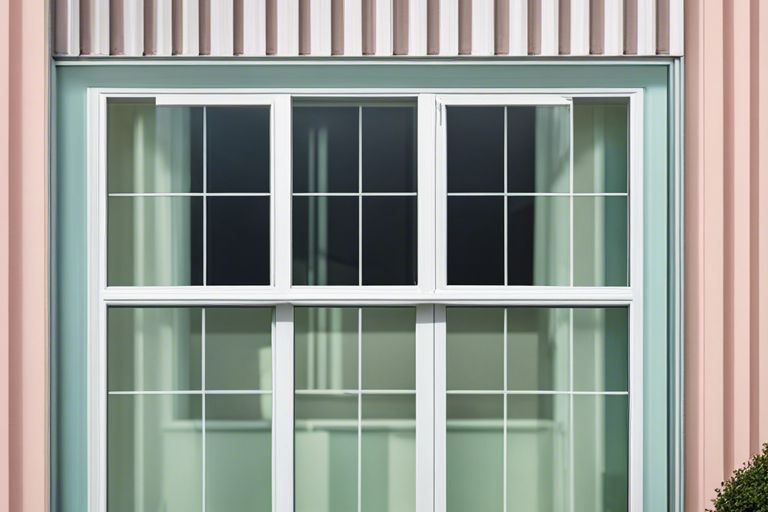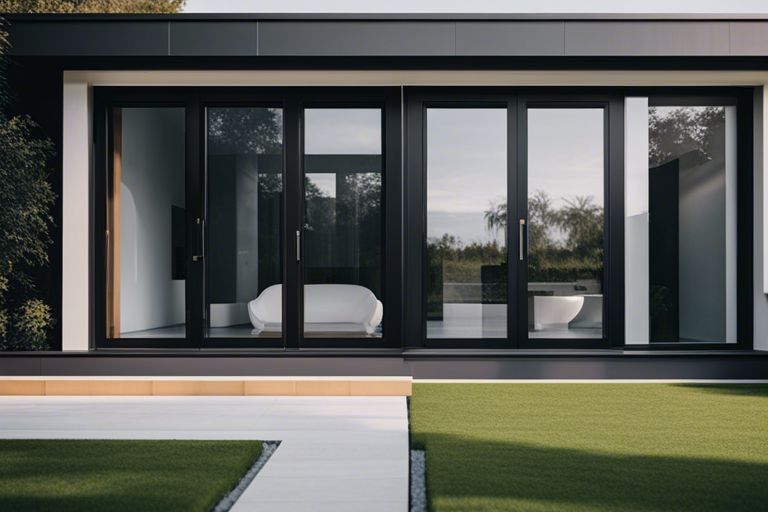In recent years, curtain walls have emerged as a trending choice for residential spaces, offering a modern and sleek alternative to traditional walls. These non-structural walls are primarily made of glass panels and aluminium frames, allowing for abundant natural light and stunning views. While they add a touch of elegance to any home, it’s crucial to consider factors such as energy efficiency and privacy when opting for curtain walls. This innovative design choice not only enhances the aesthetic appeal of a property but also creates a sense of spaciousness and connectivity with the outdoors. However, proper installation and maintenance are key to ensuring durability and safety for residents.
Key Takeaways:
- Modern Aesthetic: Curtain walls provide a sleek and contemporary look to residential spaces, enhancing their overall aesthetics.
- Natural Light: These walls allow maximum natural light to enter homes, creating a brighter and more inviting atmosphere.
- Energy Efficiency: Curtain walls are designed with energy-efficient materials, improving insulation and reducing heating and cooling costs in homes.

The Appeal of Curtain Walls in Residential Design
Aesthetic Advantages
One of the key attractions of curtain walls in residential design is their modern and sleek appearance. These walls are often made of glass, providing a seamless connection between indoor and outdoor spaces, creating a sense of openness and expansiveness. The transparency of curtain walls allows natural light to flood the interior, enhancing the overall ambiance and atmosphere of the living space.
Furthermore, curtain walls offer versatility in design as they can be customised to meet the specific aesthetic preferences of homeowners. Whether it’s a minimalist, contemporary look or a more traditional style, curtain walls can be tailored to complement any architectural concept, adding a touch of elegance and sophistication to the property.
Functional Benefits
Curtain walls not only excel in aesthetics but also provide functional benefits to residential spaces. These walls are energy-efficient as they help in reducing heat loss and gain through the use of high-performance glass. This means homeowners can enjoy a comfortable living environment while reducing energy costs in the long run.
In addition, curtain walls can enhance sound insulation in homes, creating a peaceful and quiet interior by minimising external noise penetration. This feature is particularly advantageous for properties located in busy urban areas or near high-traffic zones, offering residents a tranquil retreat within their own homes.
It is important to note that curtain walls, when properly installed and maintained, can significantly increase the property value due to their modern appeal and functional advantages.

Types of Curtain Walls Suitable for Residential Spaces
When it comes to choosing curtain walls for residential spaces, there are two main types that are commonly used – Stick System Curtain Walls and Unitized Curtain Walls. Each type offers its own set of advantages and considerations, making it important to understand the differences between them to make an informed decision for your home.
| Stick System Curtain Walls | Unitized Curtain Walls |
| Cost-effective | Faster installation |
| Customisable design | Improved insulation |
| More maintenance required | Higher initial cost |
| Flexibility in construction | Enhanced weatherproofing |
| Labour-intensive installation | Uniform appearance |
Stick System Curtain Walls
Stick system curtain walls involve assembling the curtain wall on-site by joining mullions and transoms piece by piece. This method allows for greater flexibility in design, as each component can be customised to fit the specific requirements of the building. However, this type of curtain wall typically requires more maintenance due to the potential for air and water infiltration at the joints.
One of the main advantages of stick system curtain walls is their cost-effectiveness compared to other types of curtain walls. They are also highly customisable, allowing for a unique look for each residential space. Any shortcomings in terms of installation labour are often outweighed by the design freedom they offer.
Unitized Curtain Walls
Unitized curtain walls are pre-fabricated in factory-controlled environments, with all components assembled into large units that are then transported to the construction site for installation. This method of construction offers faster installation times and improved insulation properties due to the precise manufacturing process.
Unitized curtain walls generally have a higher initial cost compared to stick system curtain walls, but they make up for it with enhanced weatherproofing and a uniform appearance. These curtain walls require less maintenance over time, making them a popular choice for residential spaces looking for a modern and efficient solution.

Implementation Challenges and Considerations
When considering the implementation of curtain walls in residential spaces, there are several challenges and considerations that need to be addressed. One major aspect is the structural requirements that these walls must meet to ensure the safety and stability of the building. Additionally, energy efficiency and building codes play a crucial role in determining the viability of using curtain walls in residential construction.
Structural Requirements
Curtain walls in residential spaces must meet stringent structural requirements to withstand various loads such as wind, seismic forces, and dead loads. It is essential to work closely with structural engineers and architects to ensure that the design of the curtain walls complies with all necessary regulations and standards. Failure to meet these requirements could result in structural instability and compromise the safety of the building and its occupants.
Moreover, the materials used for the construction of curtain walls must be carefully chosen to provide the required strength and durability while maintaining the desired aesthetic appeal. The installation process also plays a critical role in ensuring that the curtain walls are properly integrated into the overall structural system of the building.
Energy Efficiency and Building Codes
When it comes to energy efficiency and building codes, incorporating curtain walls in residential spaces can pose some challenges. Building regulations are becoming increasingly stringent in terms of energy performance and sustainability goals. It is crucial to select curtain wall systems that offer high thermal performance to minimise heat loss and improve energy efficiency.
Additionally, compliance with building codes is essential to ensure that the curtain walls meet the required standards of safety, performance, and environmental impact. Failure to adhere to these regulations could lead to costly delays, fines, or even the need for retrofitting to meet the specified requirements.
Incorporating energy-efficient features such as low-emissivity glass, thermal breaks, and insulated frames can help enhance the overall performance of curtain walls and ensure compliance with building codes and energy efficiency standards.
Maintenance and Longevity of Residential Curtain Walls
When it comes to residential curtain walls, ensuring proper maintenance is crucial in order to uphold their longevity and aesthetic appeal. Regular care not only preserves the visual appeal of the curtain walls but also contributes to their structural integrity over time.
Cleaning and Care
To maintain the pristine look of curtain walls in residential spaces, regular cleaning is vital. Use a mild detergent solution and a soft sponge or cloth to gently scrub the glass panels and aluminium frames. Avoid abrasive materials that could scratch the surfaces. Additionally, pay attention to the seals and gaskets, ensuring they are in good condition to prevent leakage.
Inspecting the curtain walls periodically is essential to detect any signs of damage or wear. Promptly addressing issues such as leaks, cracks, or discolouration can prevent further deterioration and extend the lifespan of the curtain walls. Consider hiring professionals for thorough cleaning and maintenance, especially for hard-to-reach areas or intricate designs.
Repair and Replacement Strategies
Despite regular maintenance, curtain walls in residential spaces may require repairs or replacements over time. When faced with damaged panels or frames, it’s crucial to act swiftly to prevent any structural issues or water ingress. Contact experienced professionals who specialise in curtain wall systems to assess the damage and recommend appropriate solutions.
For minor damages, such as small cracks or chipped coatings, quick repairs can be conducted to prevent escalation. However, if the damage is extensive or affects the integrity of the curtain wall, replacement of the affected components may be necessary. Investing in quality materials and expert installation ensures the longevity and performance of residential curtain walls.
Curtain Walls for Residential Spaces – A Trending Choice
As explored, curtain walls are indeed a trending choice for residential spaces, offering a multitude of benefits such as enhancing natural light, providing energy efficiency, and creating a modern aesthetic appeal. With the growing emphasis on sustainable building practices and the desire for open, light-filled living spaces, curtain walls are becoming increasingly popular among homeowners and architects alike. Their versatility in design and ability to blur the lines between indoor and outdoor spaces make them an attractive option for those looking to elevate the design and functionality of their homes. Embracing curtain walls in residential projects is not just a trend but a strategic choice that adds value and sophistication to modern living spaces.
FAQ
Q: What are Curtain Walls for Residential Spaces?
A: Curtain walls for residential spaces are non-structural outer coverings that are installed on buildings to enhance aesthetics, provide insulation, and allow natural light to enter the living spaces.
Q: Why are Curtain Walls becoming a Trending Choice for Residential Spaces?
A: Curtain walls are gaining popularity in residential spaces due to their modern and sleek design, ability to create a seamless connection between indoor and outdoor areas, and their energy-efficient properties that help in reducing heating and cooling costs.
Q: What are the Benefits of Installing Curtain Walls in Residential Spaces?
A: The benefits of installing curtain walls in residential spaces include increased natural light, better thermal efficiency, noise reduction, improved aesthetics, versatility in design options, and potential increase in property value due to the contemporary appeal of curtain walls.






